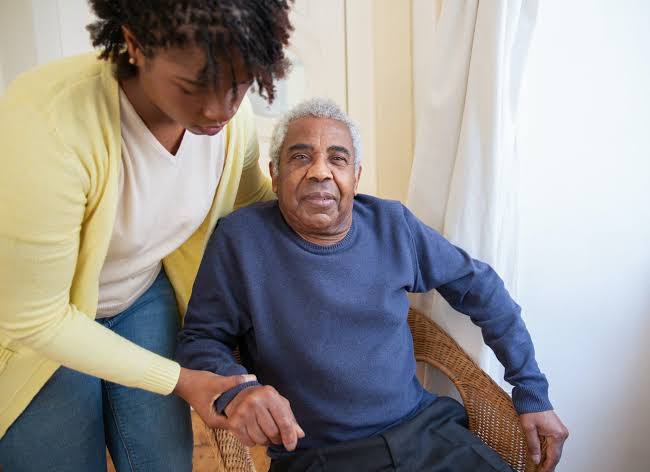Chronic pain is a common issue among elderly patients, significantly impacting their quality of life. As the population ages, it becomes increasingly important to address and manage chronic pain effectively. This article explores various strategies and approaches to help manage chronic pain in elderly patients, enhancing their overall well-being and daily functioning.
Understanding Chronic Pain in the Elderly
Chronic pain is defined as persistent pain that lasts for more than three months. In elderly patients, it can stem from various conditions, including arthritis, osteoporosis, neuropathy, and other age-related ailments. Chronic pain can lead to decreased mobility, depression, anxiety, and a reduced ability to perform daily activities.
Comprehensive Pain Assessment
Effective pain management begins with a thorough assessment. Healthcare providers should:
- Take a Detailed History: Understanding the nature, location, and intensity of the pain is crucial. Ask about the onset, duration, and factors that alleviate or exacerbate the pain.
- Use Pain Scales: Employ pain scales like the Numeric Rating Scale (NRS) or the Visual Analog Scale (VAS) to quantify pain levels.
- Evaluate Functional Impact: Assess how pain affects daily activities, sleep, mood, and overall quality of life.
- Consider Psychological Factors: Chronic pain often has psychological components, including depression and anxiety. Addressing these aspects is essential for comprehensive pain management.
Pharmacological Management
Medications play a significant role in managing chronic pain. However, careful consideration is necessary due to the potential for side effects and interactions with other medications commonly prescribed to elderly patients.
- Non-Opioid Analgesics: Acetaminophen and nonsteroidal anti-inflammatory drugs (NSAIDs) are often the first line of treatment. Acetaminophen is preferred due to its lower risk of gastrointestinal and cardiovascular side effects.
- Topical Analgesics: Creams, gels, and patches containing NSAIDs or capsaicin can provide localized relief with minimal systemic effects.
- Opioids: For severe pain unresponsive to other treatments, opioids may be prescribed. Use with caution, monitor for side effects, and adjust dosages appropriately.
- Adjuvant Medications: Antidepressants, anticonvulsants, and muscle relaxants can help manage specific types of pain, such as neuropathic pain or muscle spasms.
Non-Pharmacological Interventions
Incorporating non-pharmacological approaches can enhance pain management and reduce reliance on medications.
- Physical Therapy: Tailored exercise programs can improve mobility, strength, and flexibility, reducing pain and enhancing function.
- Occupational Therapy: Occupational therapists can recommend adaptive equipment and techniques to perform daily activities with less pain.
- Cognitive Behavioral Therapy (CBT): CBT helps patients develop coping strategies to manage pain-related thoughts and behaviors, reducing pain perception and improving mood.
- Relaxation Techniques: Methods such as deep breathing, meditation, and progressive muscle relaxation can help reduce pain and stress.
- Acupuncture and Acupressure: These traditional Chinese medicine techniques can provide relief for some patients by stimulating specific points on the body.
- Heat and Cold Therapy: Applying heat or cold to affected areas can help reduce pain and inflammation.
Lifestyle Modifications
Encouraging lifestyle changes can also play a crucial role in managing chronic pain.
- Regular Exercise: Gentle, low-impact exercises such as walking, swimming, and tai chi can improve overall fitness and reduce pain.
- Healthy Diet: A balanced diet rich in anti-inflammatory foods can help manage pain. Encourage consumption of fruits, vegetables, whole grains, and lean proteins while reducing processed foods and sugars.
- Adequate Sleep: Good sleep hygiene practices can improve sleep quality, which in turn can help manage pain levels.
- Weight Management: Maintaining a healthy weight reduces stress on joints and can alleviate pain, particularly in conditions like arthritis.
Social and Emotional Support
Chronic pain can take a toll on mental health, leading to feelings of isolation and depression. Providing social and emotional support is crucial.
- Support Groups: Joining a support group can provide a sense of community and understanding, reducing feelings of isolation.
- Counseling: Individual or group counseling can help address the emotional aspects of chronic pain.
- Family Involvement: Educate family members about chronic pain and involve them in the care plan to provide better support.
Conclusion
Managing chronic pain in elderly patients requires a comprehensive, multi-faceted approach that combines pharmacological treatments, non-pharmacological interventions, lifestyle modifications, and social support. By addressing the physical, emotional, and psychological aspects of chronic pain, healthcare providers can significantly improve the quality of life for elderly patients, helping them lead more comfortable and fulfilling lives.
Stay informed and take proactive steps to manage chronic pain effectively!
